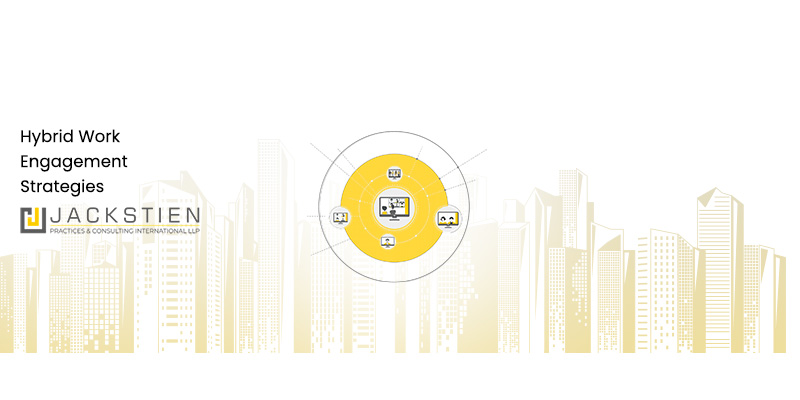Rahul wants to come in every other day. He doesn’t like working remotely all week and feels it creates a distance hard to overcome. Sophia prefers to start earlier in the day and leave by 3 pm so that she can manage her family better. The CFO feels that his team needs to be working together in office, all together at the same time.
When Rahul and Sophia bring up their flexibility needs, he feels uncomfortable starting this trend and decides to hire a couple of additional team members to fill in the gaps before he even considers their request. However, most of the qualified candidates refuse to interview for full-time on-premises roles that do not acknowledge workplace flexibility.
The future of work feels like it's here and workplace flexibility has emerged as critical for organizations to be able to attract top talent. Employees are seeking the freedom to balance their personal and professional lives in ways suitable to them. This shift, supported by an advancing world of tech has led to evolution of various forms of workplace flexibility, designed to meet the needs of different types of workers and businesses.
Rightly implementing flexible work arrangements leads to increased employee engagement, higher retention rates, and better overall performance. Not just that, companies that embrace workplace flexibility are (and are also seen as) more progressive and forward-thinking, which can make them more attractive to prospective employees and clients alike.
Hybrid Working – Isn’t That the Same as Workplace Flexibility?
Not really.
Hybrid work is just one form of flexibility. Moreover, it usually just refers to limited flexibility in terms of where you work on what days nothing more. As the demand for workplace flexibility grows businesses are exploring various ways to meet the needs of their employees. A ‘one-size-fits-all’ approach to workplace flexibility does not exist, as different types of workers and businesses may require different types of flexible work arrangements. The following sections will discuss the different types of workplace flexibility, providing a comprehensive understanding of the various options available to organizations.
Jobs That Start Mid-Day a.k.a. Flexible Schedules
Whether starting whenever the employees want (delivery-based), mid-day or evening or ‘start-early and end-early’, flexible schedules are one of the most common forms of workplace flexibility, allowing employees to adjust their work hours based on their personal needs and preferences. This can include working earlier or later hours, taking breaks when needed, or creating a customized work schedule. Flexible schedules can be particularly beneficial for employees with family responsibilities, such as childcare or elder care, those with long commutes, those with other commitments or simply for night-owls or super-early birds.
Tele-commuting jobs or ‘Working from-Home‘
Remote work, sometime referred to as work-from-home or work from anywhere or telecommuting, allows employees to work from a location outside of the traditional office setting. This can include working from a co-working space, or another location that suits the employee’s needs. Not much more needs to be said here though. The benefits are limitless but so are the challenges.
Part-time jobs for employees that involve Job Sharing
Job sharing is a form of workplace flexibility in which two employees share the responsibilities of a single full-time position. Each employee works part-time, typically splitting their hours evenly, and both employees collaborate to ensure the role is fulfilled effectively. Job sharing can be an attractive option for employees seeking a better work-life balance, as well as for businesses looking to retain talent by providing more flexible work options. Not just that, there are additional forms where the job can be part-time on-premises followed by off-site work that alternates between two employees.
Compressed workweeks
Compressed workweeks involve employees working their full-time hours within a condensed time frame. This could mean working four 10-hour days instead of five 8-hour days or working nine 9-hour days within a two-week period, with one day off. Compressed workweeks can provide employees with more time to manage their personal lives, while still allowing them to complete their required work hours.
Part-time roles
Part-time roles employ those that work fewer than the standard full-time hours for their role. This can be an attractive option for employees who are unable to commit to a full-time schedule, such as those with family responsibilities, health concerns, or other commitments. This is different from part-time jobs or functions that are performed by two or more employees who share the function. The role itself is part-time. Part-time work can also be beneficial for businesses, as it allows them to retain talented employees who may not be able to work full-time hours or to hire for work that does not require a full-time commitment on account of the quantum of work involved.
The Right Fit of Flexibility for Your Business
Selecting the right type of workplace flexibility for your business involves careful consideration of several factors, including the needs of your employees, the nature of your industry, and the specific goals and objectives of your organization. Before implementing a flexible work arrangement, businesses should first assess the general (and perhaps the specific) needs of their employees, taking into account factors such as demographics, fairness, job responsibilities, and personal preferences.
Next, organizations should consider the nature of their industry and the specific demands of their business. Some industries may be better suited to certain types of workplace flexibility than others, so it is essential to carefully evaluate the feasibility of each option. For example, a company in the technology sector may find that remote work is a more viable option than job sharing, given the nature of their work and the tools available to support remote collaboration. Some jobs, on the other hand, are better suited to job-sharing, like bank floor managers who can spend on-premises time in a customer facing role and focus on administration and approvals in their off-premises slot.
Finally, businesses should consider the potential impact of workplace flexibility on their overall goals and objectives. This may involve evaluating the potential costs and benefits of implementing a flexible work arrangement, as well as considering any potential risks or challenges that may arise. By carefully weighing these factors, businesses can make informed decisions about the most appropriate type of workplace flexibility for their organization. Hybrid or remote work consultants are invaluable resources in such instances.
Remote work policies can be tricky to implement, and many companies make mistakes that can lead to a less than optimal outcome. Checkout this article on "The Top 5 Remote Work Policy Mistakes Companies Needs to Avoid."
Examples of Successful Workplace Flexibility Initiatives
Flextime is a form of workplace flexibility that allows employees to vary their work hours within a set range, typically with a core period during which all employees must be present. Many companies have successfully implemented flextime policies, resulting in increased employee satisfaction and improved work-life balance. For example, tech giant Google offers its employees the option to choose their start and end times. Of course, there are certain core hours daring which they must be present. This flexibility allows employees to manage their personal lives while still meeting the demands of their job, ultimately leading to a happier, more productive workforce.
Several companies have successfully embraced workplace flexibility, demonstrating the potential benefits of implementing flexible work arrangements. For example, American Express has implemented a comprehensive remote work program, allowing employees to work from home or another location of their choice. This program has helped the company attract and retain top talent while also reducing overhead costs associated with maintaining office space.
Another example is pharmaceutical company Eli Lilly, which offers a range of flexible work options, including compressed workweeks, job sharing, and part-time work. These initiatives have led to increased employee satisfaction and retention rates, as well as improved overall performance.
The Gig-Economy
One potential development in the future of workplace flexibility is the rise of the gig economy, in which workers take on a series of short-term, contract-based positions rather than traditional full-time roles. This shift may lead to an increase in demand for flexible work arrangements, as more workers seek the freedom and autonomy provided by gig work.
Additionally, as businesses continue to expand their operations and collaborate with teams located in different parts of the world, workplace flexibility will likely become even more important for facilitating effective communication and collaboration across time zones, languages, and cultural barriers.
Conclusion
As technology continues to advance and the global market becomes increasingly interconnected, it is likely that workplace flexibility will become even more important for businesses and employees alike. Companies that embrace workplace flexibility and adapt to the changing needs of their workforce will likely be more successful in attracting and retaining top talent, as well as adapting to the challenges and opportunities presented by the modern business landscape.
Navigating the world of workplace flexibility can be complex, but understanding the different types of flexible work arrangements and their role in modern business is essential for organizations seeking to remain competitive and attract top talent. By carefully evaluating the needs of their employees, the nature of their industry, and the potential impact of workplace flexibility on their overall goals and objectives, businesses can make informed decisions about the most appropriate type of workplace flexibility for their organization. The role of remote and hybrid work consultants will become ever-more critical in a world where statutory, regulatory, technology, financial, taxation and data-localization norms continue to evolve and catch-up.


